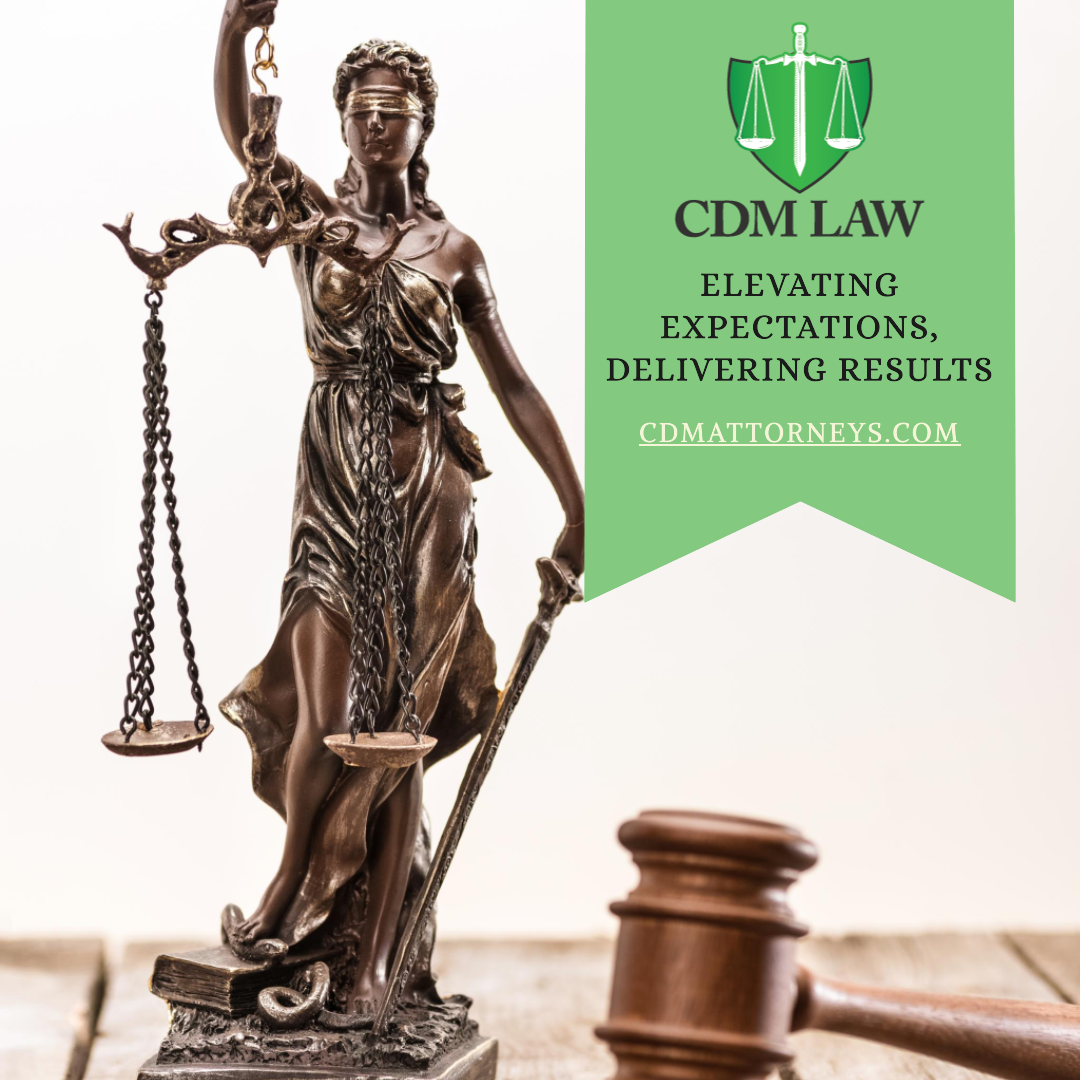New Pennsylvania Criminal Sentencing Guidelines effective Jan. 1 , 2024
Pennsylvania Criminal Law 8th Edition Sentencing Guidelines Updates
Criminal Defense Attorneys and Criminal Defendants in Pennsylvania, take note to the important and substantial changes to the Pennsylvania Sentencing Guidelines for all criminal Defendants who commit offenses on or after January 01, 2024.
According to the Pennsylvania Bulletin (Pennsylvania Bulletin (pacodeandbulletin.gov):
On March 9, 2023, the Commission adopted the 8th Edition Sentencing Guidelines, and on June 8, 2023, approved the final document for publication. The adopted 8th Edition Sentencing Guidelines are hereby submitted to the General Assembly for review by way of publication in the Pennsylvania Bulletin. The 8th Edition Sentencing Guidelines become effective 90 days after publication unless rejected by concurrent resolution of the General Assembly, and will apply to all offenses committed on or after January 1, 2024...
Description of Changes
Provided as follows is a description of each of the new sections of the adopted 8th Edition Sentencing Guidelines, noting changes from the previously published proposal and identifying similar sections contained in the 7th Edition Sentencing Guidelines.
§ 303a.1. Preliminary provisions
This section provides the statutory authorization to adopt guidelines for sentencing, probation, restrictive conditions, fines and community service; a list of dispositions authorized by statute, also referred to as sentencing alternatives; a list of sentencing and correctional programs authorized by statute; and a list of definitions of words and phrases used in the sentencing guidelines. Amendments to the published proposal include a re-ordering of subsections and the addition and modification of several definitions.
This is a new section, not included in the 7th Edition, but does include as subsections the authorized dispositions found in part in § 303.9 (relating to guideline sentence recommendation: general) of the 7th Edition and authorized programs found in § 303.12 (relating to guideline sentence recommendations: sentencing and correctional programs) of the 7th Edition.
§ 303a.2. Guideline sentencing standards
This section provides general provisions, procedures at sentencing and the reporting of information to the Commission. Amendments to the published proposal include reference to § 303a.8 (relating to effective dates of sentencing guidelines editions), which incorporates Table A from the proposal, and provides a listing of the effective dates of the editions and amendments to the sentencing guidelines; and modifications to the text to clarify the reporting of sentences and the distinction between offense-specific recommendations and judicial proceeding considerations.
This section is substantially similar to §§ 303.1 and 303.2 (relating to sentencing guidelines standards; and procedure for determining the guideline sentence) of the 7th Edition.
§ 303a.3. Offense gravity score
This section provides policies related to the assignment of offense gravity scores, including assignments for enhancements and for mandatory minimum sentencing provisions. Amendments to the published proposal include corrections regarding OGS categories limited to assignments for murder, excluding inchoates to murder from the general policy concerning OGS assignments for felonies of the first degree; references new §§ 303a.9, 303a.10 and 303a.11 (relating to offense listing (OGS/POG assignments); BUI/DUI offense listing (OGS/POG assignments); and omnibus OGS tables) that incorporate Tables B1, B-2, B-3, D-1 and D-2 related to OGS assignments and consolidate omnibus OGS assignments from the proposal; references new § 303a.12 (relating to OGS enhancements table) that incorporates Table C related to enhancements from the proposal; the addition of an omnibus enhancement to serve as a default assignment for newly enacted enhancements; and modifications to the text to correct and clarify the application of enhancements, and provide consistency between § 303a.3 (relating to offense gravity score) and § 303a.12.
The general provisions of this section are substantially similar to § 303.3 (relating to offense gravity score—general) of the 7th Edition but increases the number of offense gravity score categories from 14 general categories and an additional category limited to murder of the first and second degree, to 30 general categories and an additional eight categories limited to murder. The enhancement provisions are substantially similar to § 303.10 (relating to guideline sentence recommendations: enhancements) of the 7th Edition, although OGS adjustments replace various other methods to enhance sentences, and new or modified enhancements enacted by the General Assembly and adopted by the Commission, are included. The mandatory sentencing provisions are substantially similar to § 303.9 of the 7th Edition, although the OGS assignments for BUI and DUI have been updated to reflect recent legislative amendments and greater reliance on the mandatory requirements.
§ 303a.4. Prior record score
This section provides policies related to the determination of the prior record score, including general provisions, procedures for identifying previous offenses, lapsing provisions, procedures for determining the prior record score category and miscellaneous provisions. Amendments to the published proposal include retaining the prior record score the consideration of adjudications for crimes of violence by a person 14 years of age or older but less than 16 years of age; removing the burden of proof on the person for the lapsing of prior adjudications and convictions; providing a 10-year crime-free period since the last adjudication or conviction (gap) for removing an adjudication for a crime of violence by a person 14 years of age or older but less than 16 years of age; and deletion of the term REVOC in reference to PRS 4.
This section related to but substantially changes §§ 303.4—303.8 of the 7th Edition. Substantive amendments include increasing the age at which juvenile adjudications are considered in the prior record score from 14 years of age to 16 years of age, except for crimes of violence; establishing four prior offense groups (POG) based on the grade and seriousness of the offense, to replace the current point system; expanding the juvenile lapsing provisions and adding adult lapsing provisions; and streamlining the process for determining the prior record score, reducing the number of PRS categories and limiting the impact of prior record score for less serious offenders.
§ 303a.5. Offense-specific sentence recommendation (relabeled)
This section provides general provisions, purposes of sentencing, sentencing levels and standard range recommendations. Amendments to the published proposal include reference to § 303a.14 (relating to sentencing matrix), which is the sentencing matrix provided at § 303a.8 in the proposal; including a reference to developmental disorders or disability when addressing consideration of treatment alternatives; deletion of references to costs and fees, and clarification of references to fines and restitution; addition of administrative probation and clarification related to general probation; and amendments to the text to correct and clarify, including consistent use of the term recommend when referring to offense-specific recommendations.
This section is substantially similar to § 303.9 and §§ 303.5 and 303.11 (relating to prior record score—prior convictions; and guideline sentence recommendation: sentencing levels) of the 7th Edition. However, amendments include an increase in the number of sentencing levels from five to eight, with each of the new levels linked to a specific disposition, and in case of State confinement, further linked to a duration or specific offense; and the addition of a new level limited to murder of the third degree. Murder 3 was separated out due to the nature of the circumstances leading to a conviction and the wide distribution of sentences. In creating this new level, the Commission seeks to provide courts with broad discretion while at the same time requiring the reporting of reasons for sentences to provide a better basis for future assignments.
§ 303a.6. Aggravated and mitigated circumstances
This section provides consideration of aggravating and mitigating circumstances, the aggravated and mitigated ranges of the sentencing guidelines, sentences that depart from the guidelines and the reporting of reasons to the Commission. Amendments to the published proposal include the addition of a definition of conformity to the guidelines related to offense-specific recommendations; changes to the duration of certain aggravated/mitigated ranges and corrections of related examples; corrections to reflect no aggravated range at Level G and no mitigated range at Level A; addition of a reason related to the nature and circumstances of the offense, and a reason added to the history and character of the person; and modifications to the text to add clarity.
This section is substantially similar to § 303.13 (relating to guideline sentence recommendations: aggravated and mitigated circumstances) of the 7th Edition, but includes a list of reasons that may be considered by the court; it also expands reporting requirements by providing for the reporting of reasons to the Commission when sentencing for murder of the third degree and when the sentence imposed is outside the standard range of the guidelines.
§ 303a.7. Judicial proceeding recommendations
This section provides suggestions for consideration for imposition of concurrent or consecutive sentences, and the aggregation of consecutive sentences, during a judicial proceeding; the consideration of sentencing programs; and the determination of eligibility and appropriateness for correctional programs. These suggestions for consideration are intended to promote greater consistency in the use of concurrent or consecutive sentences, and to encourage the consideration of evidence-based programs and practices. Amendments to the published proposal include clearer distinctions between offense-specific recommendations that are used throughout the guidelines and linked to conformity and reporting, and these judicial proceeding considerations that encourage practices that promote consistency and consideration of available programming.
This is a new section, not included in the 7th Edition, but does include provisions from §§ 303.9, 303.11, and 303.12, including statutory provisions related to mandatory consecutive sentences, and provisions related to the aggregate terms of probation.
§ 303a.8. Effective dates of sentencing guidelines editions (Sentencing matrix, previously found at this section, is moved to § 303a.14).
This section provides a list of the effective dates of the editions and amendments of the sentencing guidelines. This was included as Table A in the published proposal and is now incorporated as § 303a.8. Amendments to the published proposal include adding a notation regarding the availability of previous editions and amendments to the sentencing guidelines upon request. This section is substantially similar to information provided in § 303.1 of the 7th Edition.
§ 303a.9. Offense listing (OGS/POG assignments)
This new section provides a list of all OGS and POG assignments for offenses with OGS assignments other than the omnibus OGS, as well as subcategorized offenses and offenses subject to offense-specific enhancements. This was included as Tables B-1, B-2 and B-3 in the published proposal and is now incorporated as § 303a.9. Changes to the published proposal include removing columns related to special categories of offenses, removing most offenses with the omnibus OGS assignment and creating a separate section to address the omnibus assignments. This section is substantially similar to information provided in § 303.15 (relating to offense listing) of the 7th Edition.
§ 303a.10. BUI/DUI offense listing (OGS/POG assignments)
This new section provides a list of all OGS and POG assignments for BUI and DUI offenses. This was included as Tables D-1 and D-2 in the published proposal and is now incorporated as § 303a.10. Changes to the published proposal include adding any missing offenses and creating a separate section to address the omnibus assignments. This section is substantially similar to information provided in § 303.15 of the 7th Edition.
§ 303a.11. Omnibus OGS tables
This new section provides three omnibus OGS tables, including general omnibus OGS assignments, BUI omnibus OGS assignments, and DUI omnibus OGS assignments. These tables were included in Table B-3, D-1 and D-2 in the published proposal and are now combined and incorporated as § 303a.11. Changes to the published proposal include removing the omnibus tables from the OGS/POG offense listing and creating a separate omnibus OGS section. This section is substantially similar to information provided in § 303.3 of the 7th Edition.
§ 303a.12. OGS enhancement table
This new section provides a list of all enhancements, with designation whether enhanced through subcategorization and/or adjustment, as well as the increases for the OGS adjustments. This was included as Table C in the published proposal and is now incorporated as § 303a.12. Changes to the published proposal include corrections or additions consistent with statute and with the provisions contained in § 303a.3. This section is substantially similar to information provided in § 303.10 of the 7th Edition.
§ 303a.13. POG/PRS tables
This new section provides the definition of the prior offense groups (POG) and the determination of prior record score (PRS) categories. The POG definitions were included in § 303a.4 (relating to prior record score) of the published proposal, and the PRS categories were included as Table E in the published proposal and are now combined in § 303a.13 (relating to POG/PRS tables). There are no substantive changes to the published proposal. Similar to § 303a.4, this section reflects substantive changes to prior record score polices provided in §§ 303.4—303.8 of the 7th Edition.
§ 303a.14. Sentencing matrix
This new section provides the sentencing matrix, previously published as § 303a.8, which includes the standard range offense-specific sentence recommendations based on OGS assignment and/or adjustment and the PRS determination, and information on sentencing levels and aggravated and mitigated ranges. As provided in §§ 303a.5 and 303a.6 (relating to offense-specific sentence recommendation; and aggravated and mitigated circumstances), the matrix reflects adopted changes to the published proposal. The sentencing matrix replaces those found at §§ 303.16(a) and (b), 303.17(a) and (b), and 303.18(a)—(c) of the 7th Edition, and provides more targeted sentence recommendations; greater emphasis on the use of probation and restorative sanctions, including fines and community service; and more consistent and uniform increases from across OGS and PRS categories, which supports the use of step-increases for enhancements, thus eliminating multiple matrices.
Effective Date
The 8th Edition Sentencing Guidelines will be effective January 1, 2024, for offenses committed on or after that date, unless disapproved by the General Assembly, pursuant to 42 Pa.C.S. § 2155(b) (relating to publication of guidelines for sentencing, resentencing and parole, risk assessment instrument and recommitment ranges following revocation)...
It will be important for all criminal defense attorneys and criminal defendants in Pennsylvania to review and understand the changes, to CHAPTER 303a. SENTENCING GUIDELINES, 8TH EDITION, as they will impact sentencing, expungement, and other important areas with major changes like:
§ 303a.4. Prior record score.
(a) General provisions.
(1) The [prior record score (]PRS[)] is a measure of a person's criminal history, reflecting the number and seriousness of certain previous juvenile adjudications and adult convictions. The PRS addresses the greater culpability and risk to reoffend of repeat offenders. There are five PRS categories (PRS 0—PRS 4).
(2) The PRS is determined by identifying the most serious offense for which a person was adjudicated or convicted prior to the commission of the current offense, and then considering the number of previous adjudications or convictions of equal seriousness.
(3) [Prior offense groups (]POG[)]s, as provided in § 303a.13(a) (relating to POG/PRS tables), distinguish the seriousness of previous adjudications and convictions [and are defined in paragraph (b)] as described below. [Certain previous adjudication and conviction offenses may be removed from consideration in the prior offense groups following prescribed periods of decay or gap, as described in paragraph (c).]
(i) POG1 includes all misdemeanors, unless designated as serious crimes.
(ii) POG2 includes all felonies of the third degree and all unclassified felonies, unless designated as serious crimes.
(iii) POG3 includes all serious crimes, defined as:
(A) All felonies of the first and second degree, unless designated as crimes of violence.
(B) All felonies of the third degree and misdemeanors of the first degree if:
(I) 18 Pa.C.S. Article B Chapters 25—32.
(II) 18 Pa.C.S. Chapter 61-A (relating to Uniform Firearms Act of 1995).
(III) 42 Pa.C.S. § 9799.14 (relating to sexual offenses)
(iv) POG4 includes all crimes of violence (42 Pa.C.S. § 9714(g)) (relating to sentences for second and subsequent offenses).
(4) Certain previous adjudication and conviction offenses may be removed from consideration in the prior offense groups following prescribed periods of decay or gap, as described in paragraph (c).
You will need an Experienced Attorney at CDM LAW to help guide you through the Criminal Justice System in Pennsylvania. Call CDM LAW at 610-994-0281, or visit CDMattorneys.com for more information. CDM LAW has experienced Attorneys that may be able to help you! See below for the new Pennsylvania Criminal Guidelines Sentencing Matrix.
§ 303a.14. Sentencing matrix.
Message us for Legal Help
DISCLAIMER: Please note that this information does not constitute legal advice. There is no attorney-client relationship established by reading this content. Christopher D. Mandracchia, Esq. is a licensed attorney in Pennsylvania. CDM LAW cannot guarantee the accuracy of all the information provided. It is recommended that you consult with an attorney before making any legal decisions. For more information, please visit CDMattorneys.com or call 610-994-0281.



